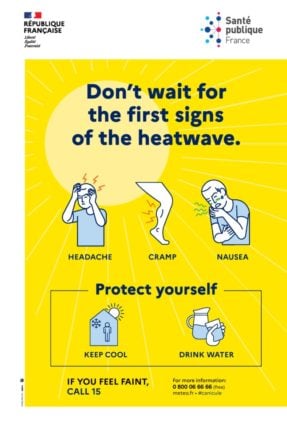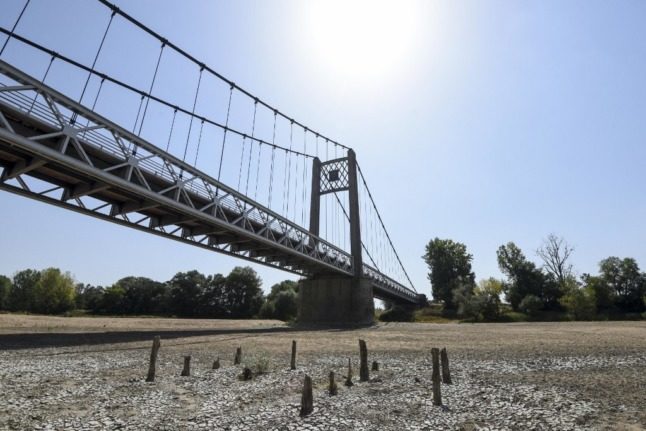French public health body Santé Publique France has activated its 2021 heatwave plan as the summer begins.
The annual plan to protect vulnerable people from the effects of intense heat has several new elements this year, including the translation of some communications into English for the first time, in order to reach tourists and immigrants who do not have fluent French.
Ever since the heatwave of 2003 in which an estimated 15,000 people died, many of them elderly people living alone in Paris, authorities have worked hard to protect the vulnerable during hot periods.
Measures put in place by local and national authorities include the installation of extra water fountains and cooling water-mist dispensers and free transport to ‘cool rooms’ for sick or elderly people who are suffering in the heat.
This year Santé Publique France has revised its communication strategy in the event of a heatwave
- Requisition of TV and radio advertising spots to broadcast warnings in the event of a national heat alert
In the event of any département being placed on orange alert for heat;
- SMS text messages sent to all vulnerable people
- Warnings broadcast on screens in shops
- Social media campaigns
Posters aimed at warning people of the first signs of heat-related illnesses, which includes posters in English for the first time.

Santé Publique France’s general advice for very hot weather is;
- Avoid going out during the hottest hours
- Keep your home cool (close windows and shutters during the day, open them in the evening and at night if it is cooler)
- If you are unable to keep your home cool, spend several hours a day in a cool place (air conditioned cinema, public library, supermarket, museum, etc.)
- Drink water regularly without waiting to be thirsty
- Refresh yourself and wet your body (at least your face and forearms) several times a day
- Eat enough food and do not drink alcohol
- Avoid physical exertion
- Keep in touch with family and friends, ask for help if necessary or offer help to vulnerable people
- Regularly consult the Météo-France alert site for information
And if you’re on a long car journey
- Remember to take drinking water and a spray bottle with you
- Stop regularly to rest and refresh yourself
- At some motorway service areas, water fountains or misting areas are available
- If possible, move your journey to the least hot hours
- Never leave a person alone in a car, especially a child, even for a few moments, as the temperature can rise very quickly.
- Get real-time information and remote assistance on health recommendations to follow in case of hot weather
Will there be heatwaves this year?
At this stage the long-range forecast suggests that the summer will be hot and dry, but without the intense heatwaves seen in 2019, where towns all over France recorded their highest-ever temperature including an all-country record of 46C and a Paris record of 42.6C.
Météo France’s prediction for June and July is consistently warm with little rain, but with no new records. However, the weather forecaster added that there could still be local peaks in temperatures.



 Please whitelist us to continue reading.
Please whitelist us to continue reading.
Member comments